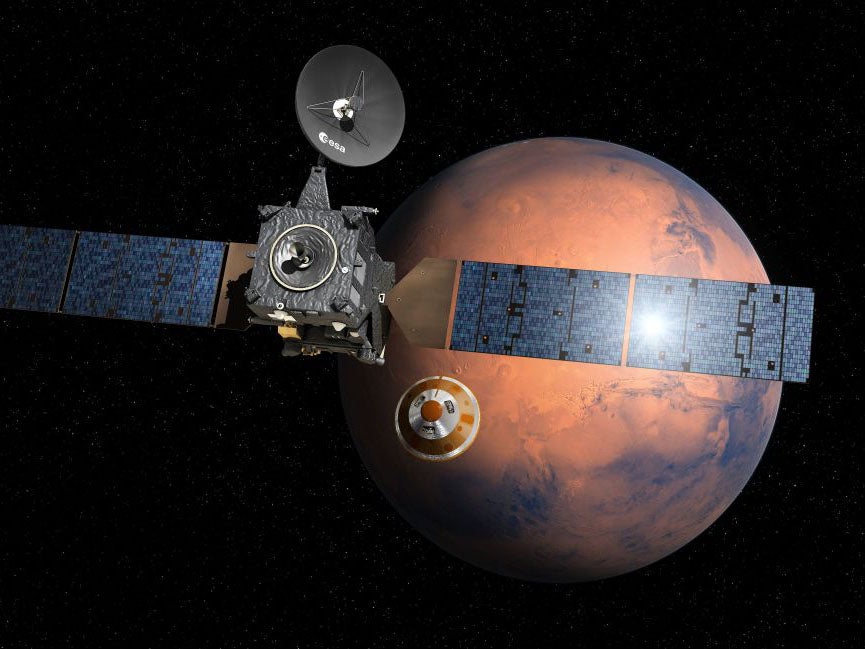ExoMars: Could we be about to find life on the Red Planet?
The Big Question: We have our biggest chance yet of finding proof of living things on the red planet, and some of the world’s most developed technology is going to help us do it

Why are we asking this now?
The first of two spacecraft has set off on its way to Mars, kicking off a mission that could give us proof that life might be or have been on the red planet.
How will we find out if there’s life?
It all depends on methane. We already think that Mars has some of the gas, but it can be generated in a number of different ways — finding out how exactly it came about, and where it came from, will be key to finding out if we’re alone in the solar system.
The technology on board the two parts of the mission — the lander that will go on the planet and drill down into it, and the orbiter that will take measurements from off Mars — will do that by looking for specific gases around the methane.
If the methane has complex hydrocarbons in it, then it likely came from life; but if it has sulphur dioxide then it’s more likely to be geological. Scientists will also study the atomic isotopes of the carbon in the methane, which will help show if it has been used by living things or by geological processes.
The rover that will drop onto the planet will also check for mineral deposits that would have been left behind by any organisms on the planet.
But all of that will only be a sign that organisms once lived there at some time — the conclusion would only be that life was “probably” on Mars, not that it definitely is or was. It’s unlikely that we’ll know for sure until further exploration can be done, perhaps by humans.
If there is life, what will it look like?
It’s impossible to say for sure. But it’s likely to look different to the life that we know here — Mars is a dead planet, making it very difficult for anything to live there, though it hasn’t always been that way.
Anything that’s left will likely be “extremophiles” — unusual organisms that have adapted themselves to the incredibly difficult surface of the planet. The atmosphere is incredibly thin and there is no magnetic field, meaning that the planet is baked with radiation, and water evaporates off from its surface.
How will it change our lives if we find something?
It could completely change the way that humans consider their place in the universe. We’ll go from our planet being the only known place with life to somewhere else — a huge move that would impact our entire understanding of creation.
If there are two planets with biological life in just our solar system, then there is likely to be millions of other places that are harbouring life too. And that in turn would greatly increase the chances of there being complex or even intelligence life somewhere in our universe.
Join our commenting forum
Join thought-provoking conversations, follow other Independent readers and see their replies
Comments